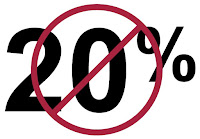Coronavirus Mortgage Relief: What You Need To Know
It’s a confusing time, but lenders are putting remedies, like forbearance, in place to help homeowners. Mortgage lenders, and the federal agencies that regulate lenders, are putting coronavirus mortgage relief measures in place to ensure homeowners have options if they’re unable to make payments. Your first stop in the face of financial hardship is your lender or bank. Just keep in mind lenders are working to figure out and implement the new mortgage relief polices outlined by the regulatory agencies. So you might read one thing from the FHFA, a federal regulator, but your bank might be doing something else. In addition, due to the number of homeowners affected by the pandemic, lenders are dealing with a crush of calls and online queries. Be patient, persistent, and prepared to spend time on hold. Here are the resources you need: Your Mortgage Federally Backed Mortgages If you have a mortgage backed by Federal Housing Administration (FHA), Veteran’s ...
